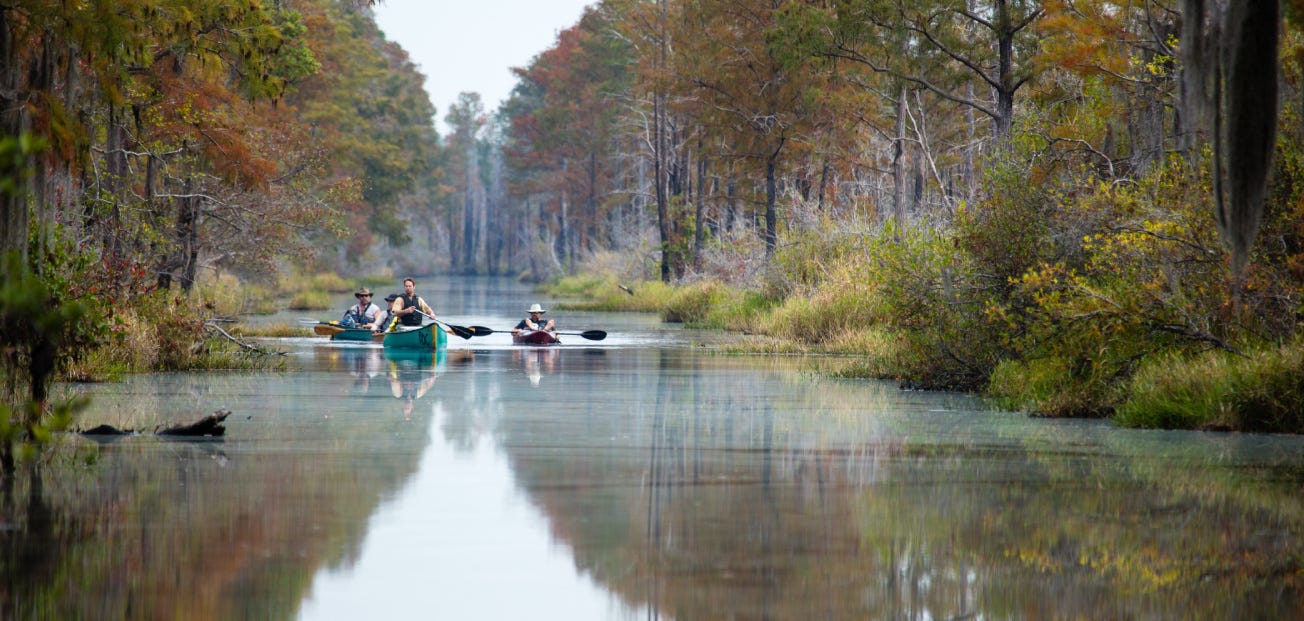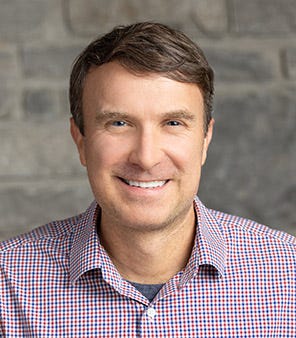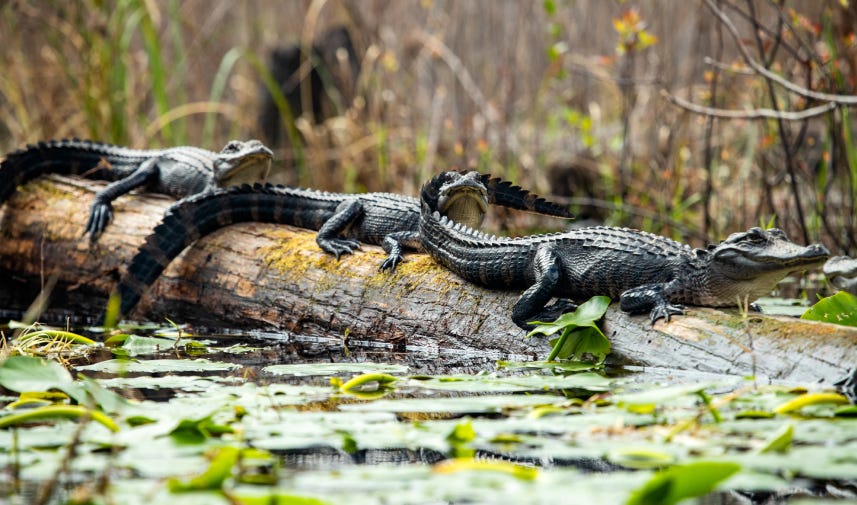Pre-sales for issue one of Southlands are now live.
As of Monday, we’d sold almost 200 issues and raised nearly $12,000—incredible progress, but a long way from our ultimate goal of 1,200 founding supporters and $75,000. Join the movement here.
In the three years I’ve been publishing this newsletter, one story has come up again and again in the link round-up: the fight to save Okefenokee Swamp, in southern Georgia.
To summarize: in 2018, a mining company, Twin Pines, proposed creating a 600-acre “demonstration mine” along a ridge just east of the swamp. They wanted to extract titanium oxide which is used for, among other purposes, keeping toothpaste sufficiently white. The ridge serves as an impoundment that holds the swamp’s water, and the U.S. Fish and Wildlife Service—which maintains the swamp, but not the ridge, as a national wildlife refuge—expressed concerns that mining might impact the ecosystem. There has been a tremendous outpouring of opposition to the proposal. But time and again, Georgia’s politicians had been unable to kill the project.
So it was big news on Friday when the Conservation Fund, a nonprofit that buys at-risk land, announced a $60 million land deal to buy 8,000 acres along the ridge. The Conservation Fund had secured financial support from several major philanthropic groups, including, notably, Holdfast Collective, the nonprofit that is now the sole shareholder of Patagonia. (Holdfast had previously supported a major land deal in Alabama.)
Stacy Funderburke, the Conservation Fund's regional vice president covering Georgia and Alabama, sat down with us to discuss what it takes to pull off a deal of this magnitude. You’ll find the conversation, which has been edited for length and clarity, below the fold.
Three good things
We cannot recommend enough some time on the wild Mississippi this summer with the Quapaw Canoe Company.
…Or make a quick trip to a boneyard beach.
Wherever you are, give a listen to this great conversation about Black land loss.
The lowdown
The U.S. Supreme Court takes up a key coastal restoration lawsuit. // A former Louisiana wildlife secretary pleads not guilty in a lawsuit over a kickback scheme. // A record-breaking haul of invasive Burmese pythons in Florida. // The National Park Service needs a seaplane contractor in Key West. // Florida beaches are getting tainted by unmonitored sewage spills. // The end of Roundup?
Southlands: I get the sense that Okefenokee means a lot to you. Let’s start there.
Funderburke: This in particular is very personal to me. I grew up in Georgia, [and] like many people, I grew up hunting, fishing, being outdoors—and that evolved over time to hiking and canoeing and mountain biking. But I didn't go [to the Okefenokee] until I was just out of law school. I went with a friend, and we did a three-night paddle across the swamp. And I was dumbstruck.
I was like, ‘This is one of the most amazing places in the world, I'll be back every year.’ This coming year will be my 20th year in a row of going on a guys’ trip. We stay out on the platforms or on the islands—usually, a three-day, two-night paddle.
And [then] I've been taking my daughters since they were four years old. We started out staying in the cabins and doing day paddles. Now they're [14 and] bringing new friends and we stay out on the platforms. I was there about a month ago with six 14-year-old girls camping on the platforms. I ended up being the lone chaperone somehow.
When I think about some of the best experiences in nature and wildlife, like those moments where you feel like you're in a National Geographic episode, half of them are in the Okefenokee."
I spend a lot of time with my family, like outdoors. We've been to half the national parks. We travel all over the world. When I think about some of the best experiences in nature and wildlife, like those moments where you feel like you're in a National Geographic episode, half of them are in the Okefenokee. It’s this wild place: You get in a canoe and you paddle 10 miles in and you're 10 miles from anything in any direction. [So when I learned about the mining threat], it weighed heavy, knowing that this existential threat was right there on the edge of this wilderness.
What can you tell me about what it takes to get a deal like this done?
It’s definitely not easy. Some people [have been] like, ‘I can't believe this just happened last minute.’ But, no, it wasn't like that at all.
I would just say, obviously, we're standing on the shoulders of all the groups who fought—litigation, trying to propose legislation to stop this, huge [amounts of] advocacy. There were over 200,000 public comments to Georgia Environmental Protection Division over this—and I was laughingly saying that’s about 195,000 more than they've ever received for anything. But it just showed there was such a tremendous outcry.
We had always hoped that there would be an opening with Twin Pines to try to work out a deal, so we entered an NDA with them years ago—probably three, three and a half years ago, but there really was not much of an opening for discussions. But circumstances change. We tried to stay in touch.
[When] the draft permit was issued last year, that was a huge alarm, because it just felt like there wasn't much standing between [Twin Pines] and mining. Then there was a delay and I think that was largely due to the huge outcry. So that was an opening.
It’s difficult, because obviously [$60 million] is a big price tag. It’s more than we would typically pay for a property like this. But it was clear that there is tremendous value in the minerals [and that we had to] something that incentivize them to take a different path. So over the last year, and particularly over the last six to nine months, [there has been] very intensive back and forth.
On an individual level, in whatever state—red state, blue state, purple state—people support public lands. For all sorts of reasons: hunting, fishing, hiking. Just the idea that they're there, protected. It's almost universal.
This gets back to the Conservation Fund and the role we play. The only real leverage we had to compete against potential mining interests was that we we have a large revolving fund that we continue to build up over time that allows us to step in and be relatively quick and nimble in these types of real estate transactions.
I knew the only way that we could take on [the] risk [of] a number this big was if we could front end as much as possible. We still have money to raise, so I don't want to imply that everything's over, but we have a really, really strong start that we had lined up prior to closing.
Holdfast was first—amazing leadership to just say, ‘This is so important.’ It was no questions asked, like, ‘We get it and we will step up first.’ [That’s] always a good signal to place funders in a place like Georgia, to see someone like that, at a national [level], step in, and it just magnifies the importance.
There’s an effort to get Okefenokee named as a UNESCO World Heritage site; the Atlanta Journal-Constitution has signaled that the Trump Administration is on board. What do you think is behind that bipartisan support?
There are a few particular interests who wanted to see this [mining project] happen, but for the most part, [there was] broad based support for protecting this crown jewel of Georgia. That was bipartisan, it was rural, it was urban.
I've been down there; I've talked to business owners and locals. They're not all on the same page, but a lot of them understand what a big economic driver [the UNESCO designation] can be over time—something to really build on for the communities around there.
Folkston, one of the towns [just outside of the refuge], should be a national level trail town. It should be the Damascus, Virginia, equivalent. It has all the bones and the pieces, but all these people visit the swamp every year [and] the money is not staying there. People are not staying for an extended period in a way that benefits local communities. It's not the only thing, because it has to come with investments on the ground, but I think UNESCO can be a catalyst for that.
This is a precarious moment for public lands. There's a lot of public land on the chopping block. I'm curious if you think there are any lessons here for that larger fight.
On an individual level, [in] whatever state—red state, blue state, purple state—people support public lands. For all sorts of reasons: hunting, fishing, hiking. Just the idea that they're there, protected. It's almost universal.
I'll just speak to the response from this announcement on Friday. People that I haven't talked to in 20 years, people I've never met before, from all over the country—they’re sending me these personal, heartfelt thanks and emails. Some of them are people who went to the swamp on a paddling trip on a Scout trip when they were 10 years old and it has a special place for them. Some are people who have never been there and will never go there. And they are saying, ‘This is so important, thank you for protecting this place.’ That just is evidence of how broadly felt this love of these wild places and public lands is. It is bipartisan, it's across the board. For me, in this moment, it’s really amazing to see how many people care so much about a place like this.
Enjoy this newsletter?
Support us by pre-ordering our first print issue, which will ship this fall. Join the movement here.







